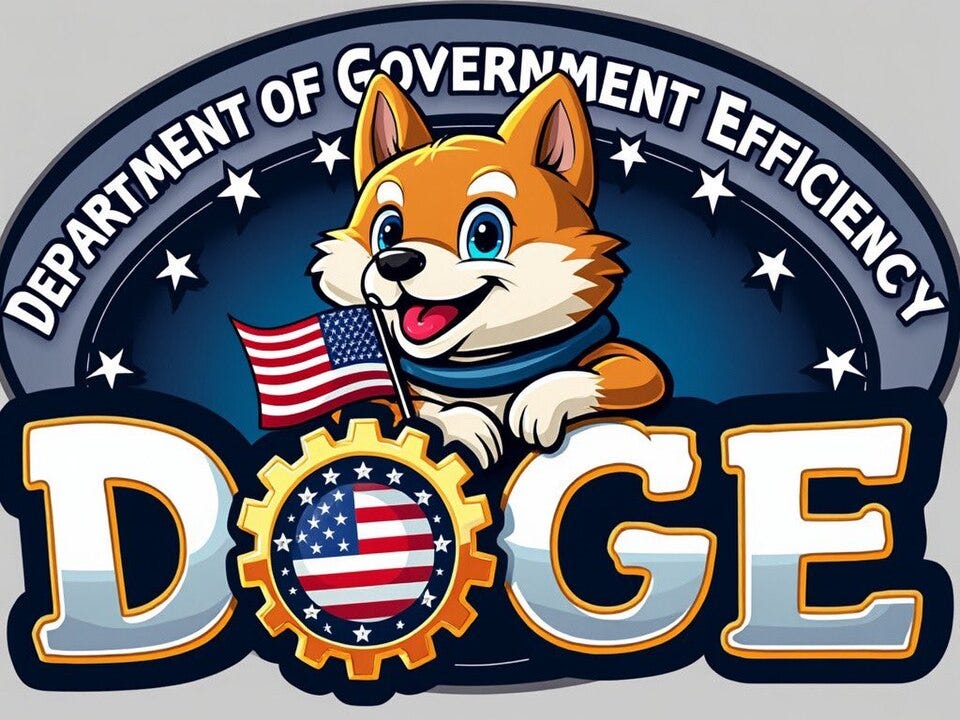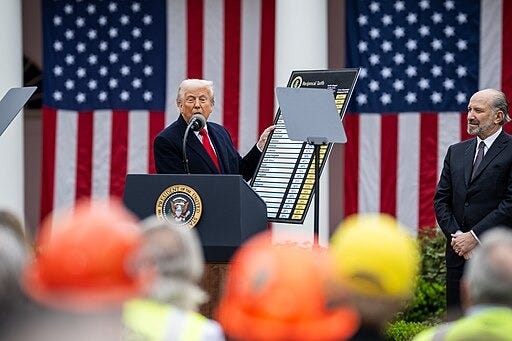This Is How We Ended Up Tariffing Penguins
How reckless vibe governing could harm every one of us.
I’ve built my career at the intersection of technology, innovation, and human impact. As an early adopter and AI enthusiast, I deeply believe in AI technology’s power to improve lives when guided by intention and responsibility.
But that’s exactly why I’m alarmed. Because when you love something, you want it used wisely—and right now, AI is being used in ways that should concern all of us.
One of the first acts of the new Trump administration was to rescind the Biden Administration's Executive Order on AI Safety. That move wasn’t unexpected—Republican administrations in the U.S. have long favored deregulation compared to the EU and other global players. And yes, too much bureaucracy can stifle innovation. But let’s be honest: unregulated tech, especially AI, can do serious harm. Trump didn’t just cancel safety investments—he launched a rapid AI expansion across government, partnering with companies like Oracle and OpenAI.
That kind of push-pull between caution and chaos is familiar in tech. But what’s new—and dangerous—is how quickly this has been impacting people’s lives through the Department of Government Efficiency, or DOGE.

DOGE has been firing federal workers based purely on AI recommendations. At first glance, it might look like innovation in action—streamlining inefficiencies, saving taxpayer money. But here’s the issue: many of those workers were later re-hired after it turned out they were fired by mistake. Some were critical personnel—people responsible for nuclear infrastructure.
This isn’t just a tech glitch. It’s a governance failure.
AI doesn’t understand context unless it’s explicitly taught to. It can’t grasp the nuances of public service, or the critical role a person plays, unless someone tells it how. And that requires prompt engineers who understand more than just software—they need to understand labor systems, policy, and the public good. But right now, the people behind these systems often don’t. They may be brilliant technologists, but they are applying this technology without the policy expertise or real-world governance insight necessary to use it responsibly.
Firing someone at a tech startup for continuously missing their target metrics is not the same as removing a public servant whose absence could affect national security.

And this issue isn’t isolated. Trump’s recent tariffs—which puzzled economists—were reportedly generated by a large language model. The numbers didn’t make sense, likely because the prompt used to generate them lacked economic context. Once again, bad prompt engineering with real-world fallout.
Now, we’re not just looking at layoffs—we’re staring down the path of a trade war and a potential recession.
This isn’t theoretical. If we let AI make high-stakes decisions without serious oversight, it’s not just someone else’s job or safety on the line—it could be yours. Your benefits. Your infrastructure. Your security.
The U.S. was once the global leader in AI. Now, we’re at risk of becoming a cautionary tale.
And yes—this is how we ended up tariffing penguins.
References:
Key takeaways from the Biden administration executive order on AI - EY.com
AI Tug-of-War: Trump Pulls Back Biden’s AI Plans - Baker McKenzie
DOGE may be using an algorithm to fire federal workers - Computerworld
DOGE Is Working on Software That Automates the Firing of Government Workers - WIRED
Trump administration tries to bring back fired nuclear weapons workers in DOGE reversal - APnews.com
Trump’s Great Rehiring: Over 26,000 Fired By DOGE Likely To Return—So Far - Forbes
Trump's tariff formula confounds the world, punishes the poor - Reuters
ChatGPT told Trump how to set tariffs — and now the world’s paying for it - Financial Review
Trump’s new tariff math looks a lot like ChatGPT’s - The Verge
Trump imposes tariffs on uninhabited islands near Antarctica - The Guardian






